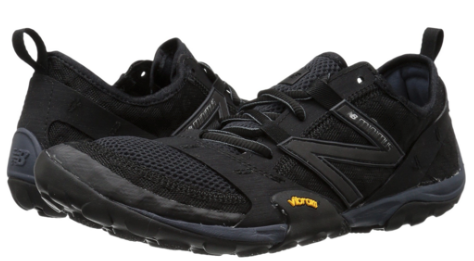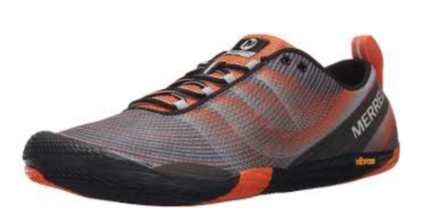Tips For Finding The Perfect Shoe
And Making Your Feet More Resilient This question falls into the same category as “Which bed is best for me?” The answer to both of these questions is, it depends.
First, it’s no secret that high heels are terrible for you. However, for some people, wearing boots or dress shoes with a higher heel is unavoidable. This does NOT mean you’re destined for injury, however it does mean you have a greater responsibility to recover from foot stress at the end of the day. If you wear heels and have no recovery routine, you’re inevitably going to wind up with pain.
So with that said, let’s discuss casual/athletic shoes. Navigating the shoe market can be daunting. Do you need extra arch support? Or maybe the minimalist shoes, which claim to be more functional, are best for you? Phrases like neutral support, high arch, and zero drop insist they are the key to giving your foot just what it needs to function well. So which do you choose?
The foot is designed to handle insane amount of forces with no problem. It’s a beautifully complex mixture of supportive arches and mobile joints which can handle forces more than five times your body weight—such as when you jump or run—and ensures the foot can mold over different terrain. The barefoot movement is all about training your feet to handle stress without using overly supportive and constrictive shoes. While fantastic in theory, the problem with this mindset is most of us only walk on artificially-flat surfaces such as concrete, tile floors, hardwood, etc., which do not actually train your feet; the stimulus to strengthen these arches and feet muscles is not there. Because of this, minimalist shoes can create more problems than help—depending on the context.
Just ask Vibram, the “five fingered shoes” company who settled a class action lawsuit in 2014 due to marketing which suggested that just by wearing these minimalist shoes, you would strengthen your feet, making them more functional. People went running in these shoes and wound up with shin splints, plantar fasciitis, runner’s knee, and every other running pathology you can name.
Going from minimal support to an absurd amount of support, Sketchers’ “shape up” shoes claimed to help tone your legs and support proper running form and the company then found themselves in a class action lawsuit as well. Based on absolutely zero science (aside from possible shotty bro science), this shoe had an enormous sole that was curved to support a heel-to-toe strike in gait, which is unnatural and leads to more injury.
Two shoes on the opposite end of the spectrum, both claiming to help foot function, and both ending up in massive lawsuits. It’s no wonder why this is such a complicated subject!
The bottom line is this: the better your foot moves, the more adaptive and less reliant on outside support your foot will be. The further away from proper functioning joints you get, the more reliant you will become on arch supports and higher heels.
Assuming you have adequate foot/ankle/knee mechanics, here are the qualities I would look for in a good shoe: (Even if you can’t find a shoe that has it all, it’s good to find a pair which have several of these.)
Flat sole: There shouldn’t be much height difference between the heel and under the ball of the foot. This is known as zero drop. Also, the entire sole should be very thin, bringing your feet closer to the surfaces you walk on. If you’re a long distance runner, this may not apply to you. You’ll want a thicker sole to cushion the thousands of steps you will take on concrete unless you have spent years conditioning your feet to run long distances with less padding.
A large toe box: Almost all shoes narrow toward the toes. However, look at any human foot with proper function, and you’ll notice it’s wider at the ball of the foot, and more narrow around the arches. Cramming the foot into a narrow toe box will really decondition the muscles of the feet and set the stage for things like bunions.
Flexible Covering: The shoe itself should be made with a cloth that allows the foot to spread and move naturally. Old Chuck Taylors are a great example of this. The material that’s covering the foot is canvas and not restrictive like thick leather and other synthetic materials often used with bulkier shoes. However, in environments where smashing or cutting the feet are a real possibility, this may not apply.
Malleable: If you can’t deform the shoe while it’s off, it’s too restrictive. The less the shoe restrains foot and ankle motion, the better you’ll be able to express your full movement and stability potential every day.
Here are two examples of shoes that I’ve used that have these qualities:
First, the New Balance Minimus.
This is the first minimalist shoe that I ever purchased. Frankly, I love it. It has a Vibram sole, but the top of the shoe looks like an ordinary tennis shoe—meaning you can wear it in public without looking odd. My only complaint is that they tend to run small and have a narrow toe box, so I’ve found it’s best to order a “wide” in a half-size up. There are several versions of this shoe for cross training and trail running that come in a variety of colors. The New Balance Minimus has all the qualities that I look for in a shoe. Of course, there’s also a women’s version.

Another shoe that I’ve gotten a lot of value from is the Merrell Vapor Glove 2:
Like the Minimus, this shoe has a cloth covering with a flat Vibram sole. However, it’s lighter and even more malleable. The name of the shoe is fitting. It really is a glove for your feet. When I lift up my toes, the whole shoe lifts with them. Wearing these is as close to barefoot as I’ve found, so If you don’t like feeling barefoot, these are not for you.
The sole is very “grippy”, making it ideal for deadlifts and squats. Just don’t drop a plate on your foot, because the cloth covering is super light. Unlike the Minimus, I was able to order these to size. The reason I recommend Version 2 is because version 3 and above are more rigid like regular tennis shoes. It also comes in a women’s version

RESTORING SOME BETTER MECHANICS I've mentioned several times the idea of "good mechanics" of the feet. To give you an idea of how to restore these mechanics of the feet, check out this longer form vidoe on the ChiroStrength YouTube page.
This first video will give you some strategies for soft tissue work, stretching, and stabilizing the foot and ankle. While this is not all encompassing, it is a really good start to restoring proper range and control of the feet and ankles.
A special thank you to Hunter Walters for collaborating on this blog. If you're interested in Restorative training at ChiroStrength, either in house or online, you can reach him fitness@chirostrength.com.
Need help improving the pain free function of your shoulders, hips, and back?! Check out the Hip and Shoulder Prehab Guide. It's a 30 page e-book packed with 44 instructional videos covering mobility, stability, and strength of the hips, shoulders, and core.
For more information on treatment or online programming for sustainable exercise and pain relief, visit www.ChiroStrength.com or call the office 931-321-1414 to schedule your complimentary consultation with Dr. Dunaway.

